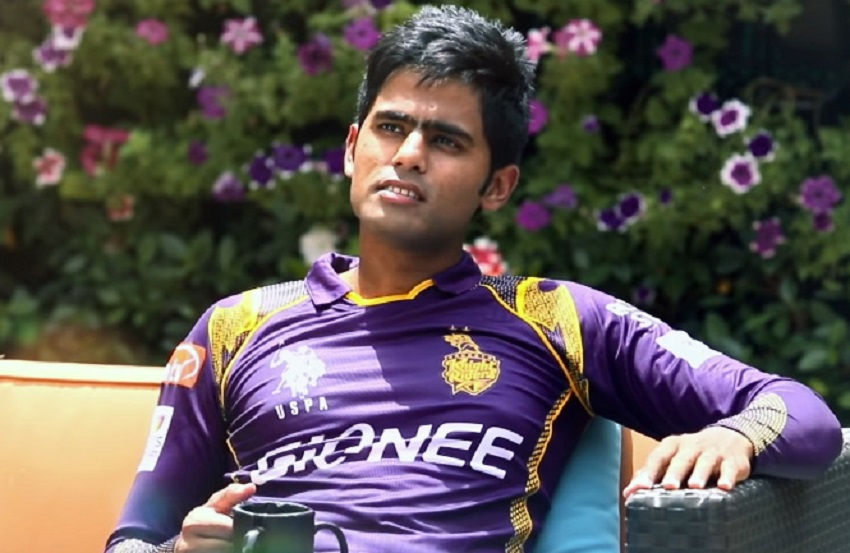Cricket is a sport that often uses various statistics to define the quality of batting and bowling. One of such methods is using batting and bowling strike-rates in cricket.
In this article, we look at the definition of cricketing strike-rate and how it’s become one of the most important cricket statistics in recent times.
So in one line, what is strike-rate in cricket? Batting strike-rate is defined as the number of runs a batter has scored in the given period per 100 balls while a bowling strike-rate is the number of balls that a bowler takes to pick up a wicket.
Simple enough? If not, we have a much deeper explanation around strike-rates in cricket below.
Batting Strike-Rate
Batting strike-rates for batters are typically calculated over an innings or a pre-defined period or even over their careers. It denotes the number of runs a batter has scored over 100 balls.
The simple formula to calculate a batter’s strike-rate is as follows:
Batting Strike-Rate = (Runs Scored X 100)/Balls Faced.
For instance, if a batter makes 64 off 50 balls in a game, his/her strike-rate is 64X100/50 = 128. What this implies is the batter scores 128 runs per 100 balls.
Similarly the same can be calculated over a batter’s career as well.
If a batter has scored 5645 runs in his/her career and faced 5200 balls in doing that, his/her strike-rate is 5645X100/5200 = 108.56. What this means is the batter scores 108.56 runs per 100 balls.
Bowling Strike-Rate
Bowling strike-rates are typically calculated over a pre-defined period or over a career but not so much over an innings or a match. It denotes the number of balls a bowler has taken to pick up a wicket.
The simple formula to calculate a bowler’s strike-rate is as follows:
Bowling Strike-Rate = No. of Balls Bowled/Wickets Taken
For instance if a bowler ends a career with 245 wickets and has bowled 9800 balls to do so, his/her career bowling strike-rate will be 9800/245 = 40. What this means is this bowler picks up a wicket every 40 balls he bowls.
Why is Strike-Rate an important statistic in cricket?
In an era where T20 cricket is gaining more and more traction, batting strike-rates have become even more important than player averages.
While a batter’s average will denote the number of runs he/she has scored in each of the innings the batter has been dismissed, a high batting average could have come at the expense of lower batting strike-rates and that might not work out too well for the side.
A strike-rate gives the management and fans an indication how quickly a batter can score runs which is one of the prerequisite in ODI and T20I cricket.
On the other hand, bowling strike-rates aren’t quite commonplace in limited overs cricket – the more important figures are bowling averages and economy-rates.
A bowling average is the number of runs a bowler concedes while picking up each of his/her wicket while economy-rate denotes the runs conceded per over by the bowler. A combination of lower bowling average and lower economy-rate makes for a better bowler.
In Tests, however, a bowling strike-rate is a way more useful tool because it gives information on how quickly a bowler can pick up wickets without worrying too much about how much he/she is conceding per wicket or per over.
What is considered as a good batting & bowling strike-rate across the three formats?
Cricket has been around 1877 and it’s evolved over these many years as a sport. Batting strike-rates have improved drastically while bowling strike-rates haven’t shown the same trajectory.
Below are some of the typical figures of excellent strike-rates in all three formats of the game.
Batting Strike-Rate in Tests
Batting strike-rates have traditionally not mattered too much in Test cricket because of the very nature of this format.
Test match cricket is played over five days and at the core of this format is survival – at least from a more traditional standpoint – and this is why it hasn’t mattered how quickly or slowly a batter has batted to achieve his/her results.
That being said, more and more batters have started become more and more aggressive in Test match cricket and batting strike-rates have drastically improved with time.
Among batters who have scored at least 1000 runs in men’s Test match cricket, some of the top strike-rates at the time of writing belong to the likes of Harry Brook, Shahid Afridi, Ben Duckett and Virender Sehwag – all of whom have strike-rates of more than 80.
At the other end of the spectrum are batters who have scored at least 1000 runs at strike-rates of less than 30 in Test match cricket. Even those having achieved the rare task of scoring more than 10,000 runs in Tests have a strike-range of 40 (Allan Border) to 60 (Brian Lara).
Batting Strike-Rate in ODIs
It’s in white ball cricket that batting strike-rates have a greater usage, especially from the point of view of comparison and selection.
In ODIs, among those who have at least 2000 runs to their name, Glenn Maxwell and Jos Buttler top the strike-rate list with 125.4 and 117.9 to their name. Shahid Afridi, who has more than 8000 runs in ODI cricket, ended his career with a strike-rate of 117.
As things have evolved in white ball cricket, a strike-rate of over 90 is typically said to be a good one.
Batting Strike-Rate in T20Is
Even more so in T20I cricket than ODIs, strike-rates play a huge role in selections. Batters in the first six overs (the Powerplay) and the death overs are expected to bat at high strike-rates (death overs specialist at times touch strike-rates of 200+ in that phase of the game).
In international T20 cricket, among those who have at least 1000 runs to their name, Suryakumar Yadav has a strike-rate of 172.7 at the time of writing – the best in the business.
Colin Munro (156.44), Evin Lewis (152), Glen Maxwell (151) and Shahid Afridi (150) are some of the others with excellent T20I strike-rates.
Bowling Strike-Rate in Tests
While bowling averages matter a lot in Test cricket, bowling strike-rates have often been used to separate the great from the good.
In the last 50 years of Test cricket, among bowlers who have taken at least 50 wickets, the really excellent ones have strike-rates of less than 50 (i.e. 50 balls per wicket).
South African seamer Duanne Olivier has a strike-rate of 35.3 while New Zealand fast bowler Shane Bond retired with 87 wickets taken at a strike-rate of 38.7.
The best bowling strike-rate among those who have taken more than 250 wickets belongs to Kagiso Rabada (39.7) while Dale Steyn who had 439 wickets, ended with a strike-rate of 42.3.
Among the top wicket-takers in Test cricket – Muthiah Muralidaran (800 wickets), Shane Warne (708), James Anderson (690), Anil Kumble (619), Stuart Broad (604) and Glenn McGrath (563) – the strike-rate ranges between 51.9 for McGrath to 65.9 for Kumble.
Bowling Strike-Rate in ODIs
In ODI cricket, among those with at least 100 wickets and with majority of those having come against Test-playing teams, Mitchell Starc’s 26.2 is the best strike-rate.
Mohammad Shami has a strike-rate of 27 while Trent Boult, Shane Bond, Brett Lee and Mustafizur Rahman have all got their strike-rates at less than 30.
Bowling Strike-Rate in T20Is
Among those playing for the Full Member nations and with at least 50 wickets to their name, Lungi Ngidi has a bowling strike-rate of 13, while Kuldeep Yadav is also among the best with 13.2.
Ajantha Mendis ended his career at 13.4, which is the same as Imran Tahir.
Photo Credit: – YouTube – View/save archived versions on archive.org and archive.today

